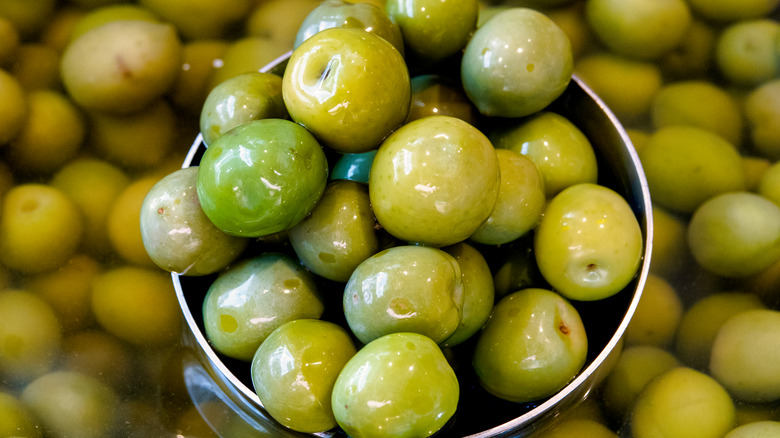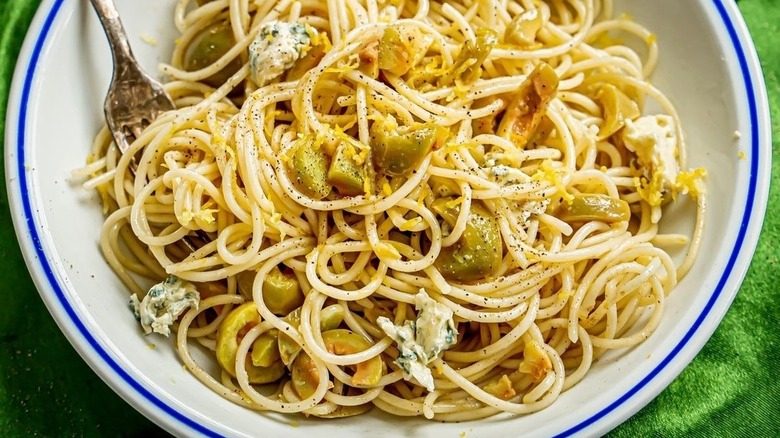The Must-Use Olives When Whipping Up Dirty Martini Pasta
How do you like your dirty martini? Shaken with a layer of crushed ice on top, stirred until cold and smooth, or as a hot plate of pasta? If that last one throws you for a bit of a loop, then you obviously haven't seen one of the latest TikTok food trends: dirty martini pasta. This simple and satisfying dish combines gin, olive juice, lemon zest, butter, olives, garlic, and blue cheese, all tossed with spaghetti. There are obviously lots of bold flavors in the dish, so it is important to balance them so that it's not an all-out assault on your palate, especially when it comes to the olives. There are tons of varieties to choose from, but a milder green olive is the order of the day here, and Castelvetrano olives fit the bill perfectly.
Far from the salt bombs that are classic pimento-stuffed bar olives, or the bitter brininess of Kalamatas, Castelvetrano olives offer a creamy, almost buttery flavor, and a pleasantly firm yet yielding mouthfeel. These green olives are grown in Sicily and are a staple of Italian cuisine. They're eaten on their own as antipasti, pressed for olive oil, and also used in a variety of dishes. Castelvetrano olives get their characteristics from a gentle — compared to other olives — processing. They are salt-cured, but only lightly, leaving their natural flavor more pronounced. Also, they do not undergo fermentation, but are rinsed in a lye solution to remove the bitterness present in all olives.
How to cook with Castelvetrano olives
Castelvetrano olives are sold both pitted and not. Either is fine to cook with, though some might find it easier to have the pits already removed. If you can't find pitted Castelvetrano olives, removing the pit yourself is relatively easy. It should be noted that because they are picked before being fully ripe, the fruit clings a bit harder to the pit. Whereas some olives, like Kalamatas, can simply be pitted by pressing on them with the broad side of a chef's knife, Castelvetrano olives require the business end of a paring knife. Working carefully, slice the fruit away from the pit one hemisphere at a time, then go back and remove what is left.
If you can't find Castelvetranos, other varieties of olives can be substituted. The French Picholine olive is a slightly tarter green olive, whose buttery flavor makes it a great stand-in. Another Italian olive that works is the Cerignola, a plump and mild olive that is frequently sold as a gourmet table olive.
If dirty martini pasta just doesn't appeal to you, there are other great recipes that call for Castelvetrano olives. The flavor and texture are a perfect pairing for seafood. Squid doesn't have to be eaten fried: Our Calamari and Castelvetrano olives recipe sees it sautéed with garlic, lemon, red pepper, and white wine before being finished with the chopped green olives and crunchy breadcrumbs. Feel free to have your dirty martini on the side.

